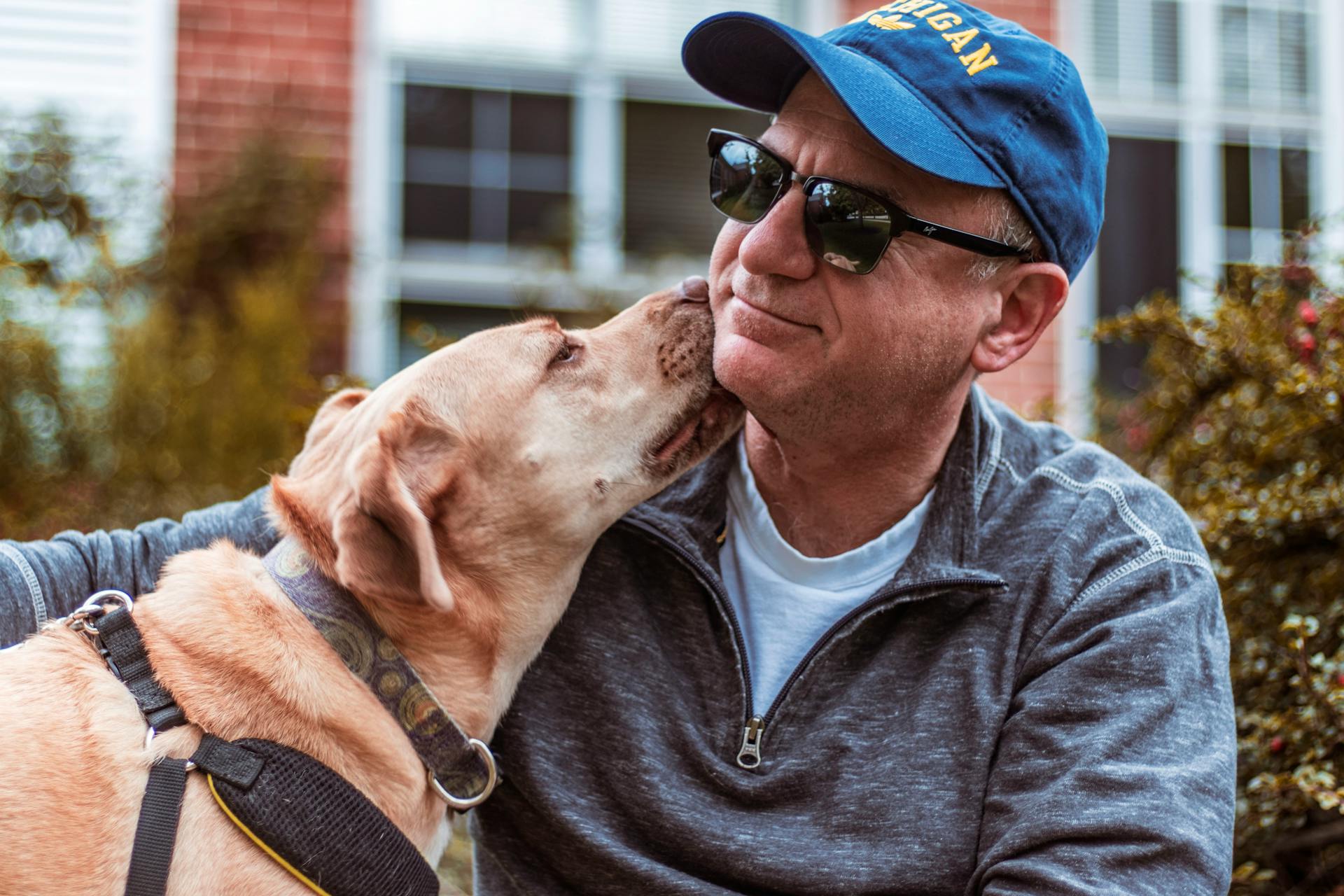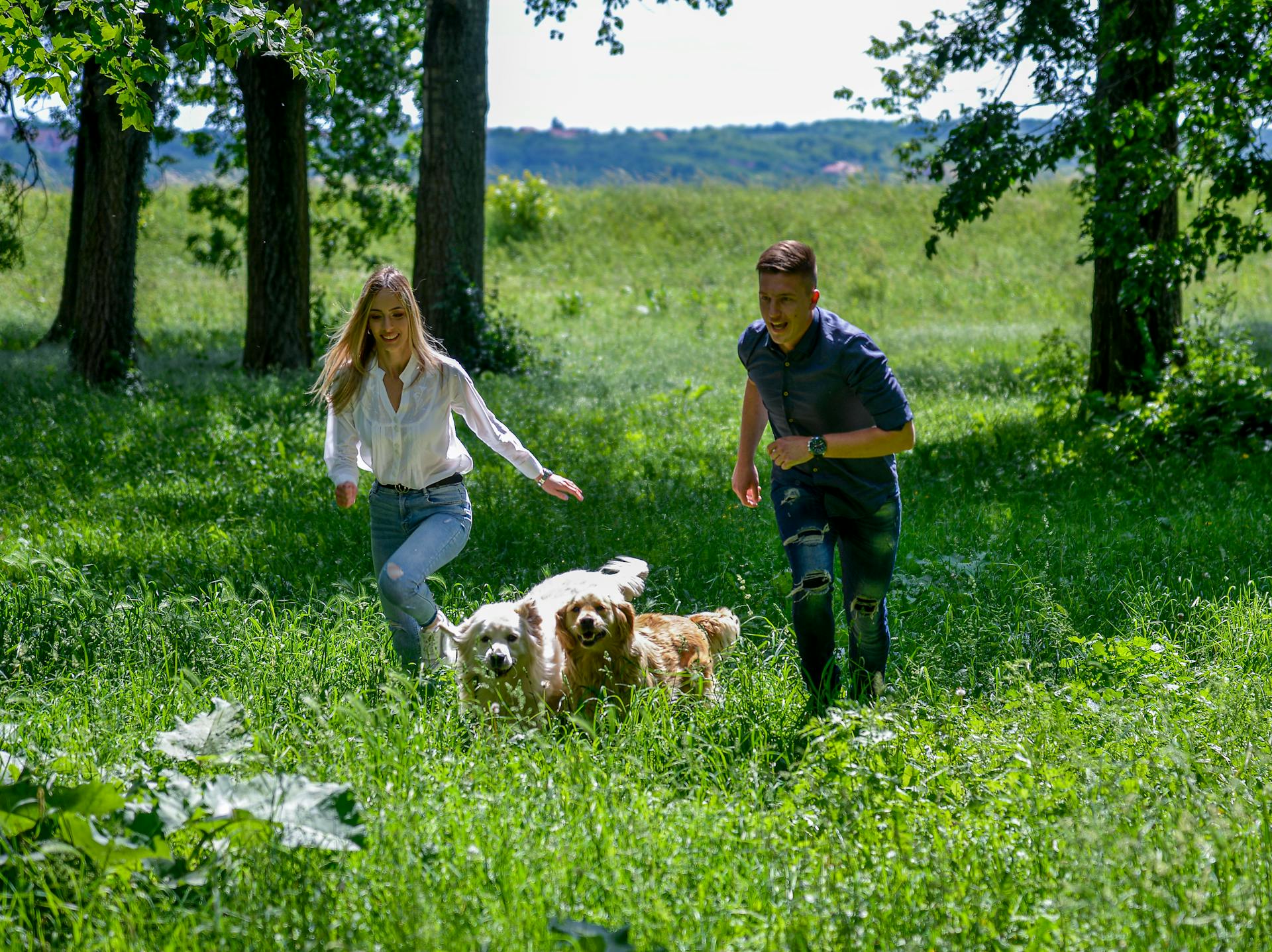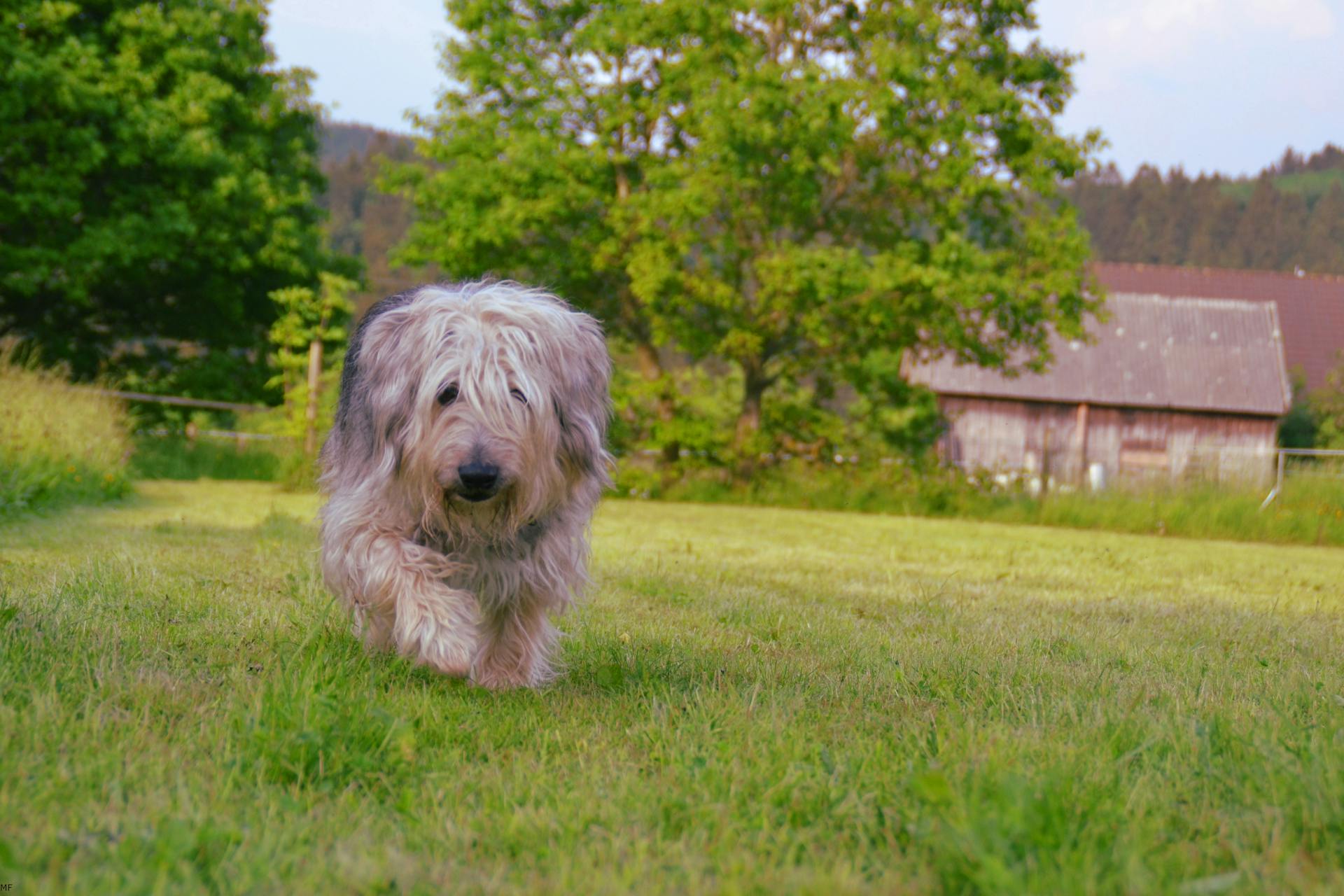
Having a male and female dog in the same house can be a wonderful experience, but it's not without its challenges. A key benefit is that the dogs can keep each other company and reduce boredom.
Studies have shown that dogs that live together can become more relaxed and less anxious, which can lead to a more peaceful household.
Male and female dogs can also help each other get exercise and stimulate their minds through play and interaction.
By living together, dogs can also learn important social skills from each other, such as how to behave around other animals and people.
Tips for a Harmonious Household
Having a male and female dog in the same house requires some planning and patience.
To ensure a smooth introduction, start with outdoor introductions before bringing them into the house together. Leave the leashes on so you can control both dogs if needed. Remove any bones, toys, and food bowls that your resident dog might feel the need to protect from the new dog.

Keep the dogs separated while you're gone until they're comfortable with each other under various circumstances. Supervise their interactions and give them breaks from each other by crating one at a time or taking them for separate walks.
Some posturing and mild aggression can be normal as dogs become more comfortable, even after a successful first few days or weeks. Don't panic!
If you notice any signs of escalating aggression or an injury, separate them as soon as safely possible and contact a behavior helpline for support.
Here are some tips to help you navigate the introduction process:
- Do outdoor introductions before bringing the dogs into the house together
- Leave the leashes on so you can control both dogs if needed
- Remove any bones, toys, and food bowls that your resident dog might feel the need to protect from the new dog
- Keep the dogs separated while you're gone until they're comfortable with each other under various circumstances
- Supervise their interactions and give them breaks from each other
Don'ts
Having a male and female dog in the same house can be a wonderful experience, but it's essential to do it right. Don't throw two dogs together in a car, house, or yard and assume they will work it out.
It's crucial to supervise or separate them at home for a few weeks to ensure a smooth transition. Keep in mind that even social dogs that seem to get along need some time to adjust.

When introducing the dogs, don't keep the leashes tight when they first meet. The pressure from pulling only increases tension between dogs.
Let's take a look at some common mistakes to avoid:
- Don't keep the leashes tight when dogs first meet.
- Don't let the dogs rush up to one another.
- Don't use a stern voice, telling the dogs to “Be good!” or “Be nice!”
- Don't immediately introduce competition or conflict over popular toys, food, or bones.
Remember, some barking is okay, but it's essential to recognize the difference between happy barking and anxious barking.
Understanding Your Dogs
Dogs are social animals and thrive on interaction with their human family members.
They have a strong instinct to follow a pack leader, which in your household is likely you.
Male dogs, in particular, are known to be more dominant and assertive than their female counterparts, which can sometimes lead to conflicts between the two.
Female dogs, on the other hand, are often more submissive and may try to avoid confrontations with their male companion.
Individual Personalities Matter
Individual personalities matter when it comes to introducing a second dog to your household. Each dog is a unique individual with its own temperament, energy level, and social preferences.

A dog's energy level is a crucial aspect to consider. Dogs with similar energy levels are more likely to get along well, as they can engage in compatible activities and play styles.
A high-energy dog might become frustrated or overwhelmed if paired with a more sedentary companion, while a laid-back dog might feel stressed or anxious if constantly pressured to play by a highly active partner.
Temperament is another critical factor in determining how well dogs will get along. Some dogs are naturally more social and outgoing, while others may be more reserved or independent.
Dogs with similar sociability and coping mechanisms are more likely to form a strong bond and navigate shared spaces harmoniously. Observing how each dog reacts to various stimuli, such as other animals, strangers, or changes in the environment, provides valuable insights into their temperaments.
Dogs
When introducing a new dog to your household, the age gap between the dogs can play a significant role in their interaction. A harmonious coexistence is more likely when the age gap is not too great, allowing for a balanced dynamic between the dogs.
For your interest: When Is a Female Dog Most Fertile

Dogs of different genders may possess complementary play styles, temperaments, and energy levels, creating a balanced and dynamic duo. This balance can lead to a harmonious coexistence, where each dog's strengths compensate for the other's weaknesses.
A more laid-back male dog might pair well with a playful and energetic female, creating a balanced and dynamic duo. This pairing can foster a more cooperative living environment.
Opting for dogs of different genders may reduce the likelihood of same-sex rivalry or competition. This reduction in rivalry can contribute to a more peaceful household where the dogs interact positively and support each other's social needs.
Responsible pet ownership involves ensuring that both dogs are sterilized unless breeding is a deliberate and well-planned decision. This precaution not only prevents unplanned pregnancies but also minimizes certain behavioral issues associated with intact dogs.
Understanding and accommodating the unique needs and behaviors associated with each gender is crucial for a successful pairing.
Frequently Asked Questions
Will my female dog get along with a male dog?
While some female dogs get along with males, introducing a male dog to a female dog can lead to rivalry and competition, so it's best to consider the opposite sex for a harmonious household. Team a female dog with a male counterpart to play it safe and ensure a smoother transition.
Are dogs happier in pairs?
Dogs are naturally social animals that thrive in group environments, making them happier and more fulfilled when they have a companion. Adopting a second dog can provide them with a built-in playmate and exercise buddy, leading to a more joyful and engaging life.
Sources
- https://www.quakershillvethospital.com.au/dogs/adding-a-second-dog-to-your-family/
- https://www.whole-dog-journal.com/care/adding-a-new-dog-to-a-multi-dog-household-plan-ahead/
- https://www.webmd.com/pets/dogs/features/adding-another-dog-to-your-home
- https://www.jennaleedoodles.com/post/should-your-second-dog-be-the-same-gender-as-the-first
- https://www.animalhumanesociety.org/resource/how-successfully-introduce-two-dogs
Featured Images: pexels.com


